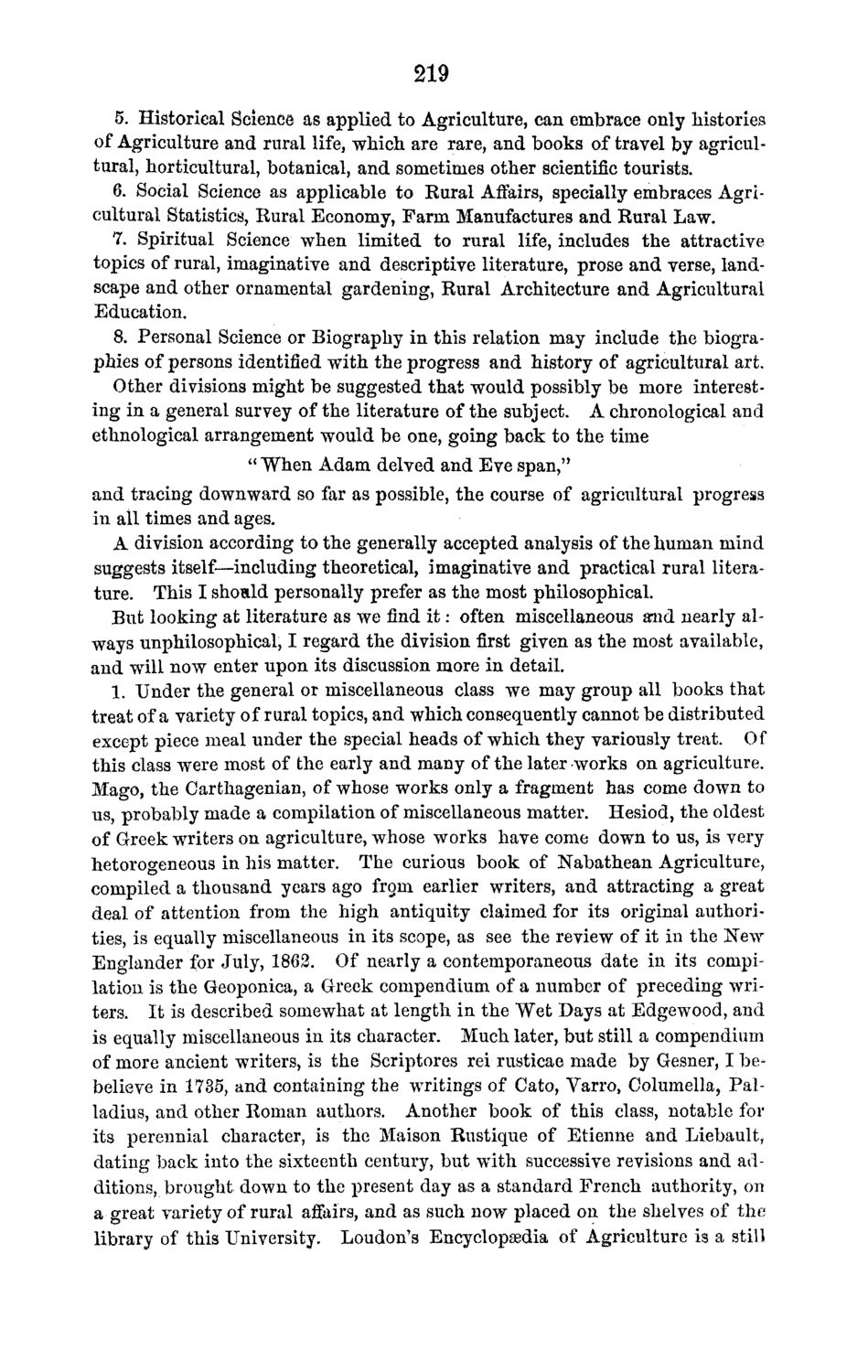| |
| |
Caption: Board of Trustees Minutes - 1870
This is a reduced-resolution page image for fast online browsing.

EXTRACTED TEXT FROM PAGE:
219 5. Historical Science as applied to Agriculture, can embrace only histories of Agriculture and rural life, which are rare, and books of travel by agricultural, horticultural, botanical, and sometimes other scientific tourists. 6. Social Science as applicable to Rural Affairs, specially embraces Agricultural Statistics, Rural Economy, Farm Manufactures and Rural Law. 7. Spiritual Science when limited to rural life, includes the attractive topics of rural, imaginative and descriptive literature, prose and verse, landscape and other ornamental gardening, Rural Architecture and Agricultural Education. 8. Personal Science or Biography in this relation may include the biographies of persons identified with the progress and history of agricultural art. Other divisions might be suggested that would possibly be more interesting in a general survey of the literature of the subject. A chronological and ethnological arrangement would be one, going back to the time " When Adam delved and Eve span," and tracing downward so far as possible, the course of agricultural progress in all times and ages. A division according to the generally accepted analysis of the human mind suggests itself—including theoretical, imaginative and practical rural literature. This I shomld personally prefer as the most philosophical. But looking at literature as we find i t : often miscellaneous a-nd nearly always unphilosophical, I regard the division first given as the most available, and will now enter upon its discussion more in detail. 1. Under the general or miscellaneous class we may group all books that treat of a variety of rural topics, and which consequently cannot be distributed except piece meal under the special heads of which they variously treat. Of this class were most of the early and many of the later works on agriculture. Mago, the Carthagenian, of whose works only a fragment has come down to us, probably made a compilation of miscellaneous matter. Hesiod, the oldest of Greek writers on agriculture, whose works have come down to us, is very hetorogeneous in his matter. The curious book of Nabathean Agriculture, compiled a thousand years ago frgm earlier writers, and attracting a great deal of attention from the high antiquity claimed for its original authorities, is equally miscellaneous in its scope, as see the review of it in the New Englander for July, 1862. Of nearly a contemporaneous date in its compilation is the Geoponica, a Greek compendium of a number of preceding writers. It is described somewhat at length in the Wet Days at Edgewood, and is equally miscellaneous in its character. Much later, but still a compendium of more ancient writers, is the Scriptores rei rusticae made by Gesner, I bebelieve in 1735, and containing the writings of Cato, Varro, Columella, Palladius, and other Roman authors. Another book of this class, notable for its perennial character, is the Maison Rustique of Etienne and Liebault, dating back into the sixteenth century, but writh successive revisions and additions, brought down to the present day as a standard French authority, on a great variety of rural affairs, and as such now placed on the shelves of the library of this University. Loudon's Encyclopaedia of Agriculture is a still
| |